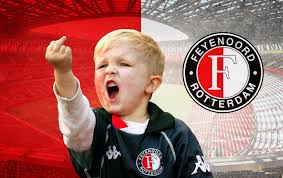Defending Corner Kicks: Strategies and Tips
Defending corner kicks is a crucial aspect of soccer that can make or break a team’s performance. A well-executed corner kick can lead to a goal, while a poorly defended one can result in conceding a goal. Therefore, it is essential for soccer players to understand the fundamentals of corner kick defense to prevent their opponents from scoring.

To defend a corner kick successfully, players need to be aware of their defensive formations and tactics, positioning, and organization. They must also be able to respond to different types of corner kicks and communicate effectively with their teammates. Practical training and drills are necessary to hone these skills and prepare players for real-game situations.
In this article, we will explore the fundamentals of corner kick defense, defensive formations and tactics, positioning and organization, responding to different types of corner kicks, communication and teamwork, practical training and drills, and analyzing professional teams. By the end of this article, readers will have a comprehensive understanding of how to defend corner kicks in soccer.
Key Takeaways
- Understanding the fundamentals of corner kick defense is essential for preventing opponents from scoring.
- Proper defensive formations and tactics, positioning, and organization are crucial for successful corner kick defense.
- Effective communication and teamwork, practical training and drills, and analyzing professional teams are necessary for improving corner kick defense skills.
Fundamentals of Corner Kick Defense
Understanding the Corner Kick
A corner kick is awarded to the attacking team when the ball goes out of play over the goal line, having last been touched by a defender. The attacking team then gets a chance to take a set-piece from the corner of the pitch. The defending team, on the other hand, must be prepared to defend against the attacking team’s corner kick.
Roles of Defenders and Goalkeeper
The defending team’s primary objective during a corner kick is to prevent the attacking team from scoring a goal. Defenders and the goalkeeper play crucial roles in achieving this objective.
The goalkeeper is responsible for commanding the defense and organizing the positioning of the players in the box. The goalkeeper should be positioned in a way that allows them to cover as much of the goal as possible and be ready to react to any shots on target.
Defenders should be positioned in a way that allows them to mark the attacking players and prevent them from getting free headers or shots on target. Defenders can use either man-to-man marking or zonal marking strategies to defend against corner kicks.
In man-to-man marking, each defender is assigned an attacking player to mark and prevent them from getting free headers or shots on target. In zonal marking, defenders are assigned specific zones to cover and are responsible for preventing any attacking players from entering their zone and getting free headers or shots on target.
Overall, a well-organized and disciplined defense is key to successfully defending against corner kicks. Defenders and the goalkeeper should communicate effectively and be aware of their roles and responsibilities during corner kicks.
Defensive Formations and Tactics
When it comes to defending corner kicks, coaches have several options for organizing their team. The most common defensive formations and tactics include zonal marking, man marking, and mixed marking strategies.
Zonal Marking
In a zonal marking system, each defender is responsible for a specific area of the penalty box. This means that when the ball is crossed into the box, defenders move to their designated area and attempt to clear the ball. This system is often used when a team has tall, physically imposing defenders who can win aerial battles. However, it can be vulnerable to attackers who make late runs into the box.
Man Marking
In a man marking system, each defender is assigned a specific attacker to mark. This means that when the ball is crossed into the box, defenders follow their assigned attacker and attempt to prevent them from scoring. This system is often used when a team has fast, agile defenders who can keep up with attackers. However, it can be vulnerable to attackers who make unpredictable runs or who are physically stronger than their markers.
Mixed Marking Strategies
Some teams use a mixed marking strategy, which combines elements of both zonal and man marking. For example, a team might use zonal marking for the players in the center of the penalty box and man marking for the players on the edges. This system can be effective because it allows defenders to use their strengths while minimizing their weaknesses.
Regardless of the defensive formation or tactic used, it is important for defenders to communicate with each other and stay organized. Defenders should also be aware of the positions of their opponents and adjust their positioning accordingly. With the right strategy and execution, a team can successfully defend against corner kicks and prevent their opponents from scoring.
Positioning and Organization
When defending a corner kick, proper positioning and organization are crucial to prevent the opposing team from scoring. This section will discuss the key elements of positioning and organization, including setting up the defense, marking key spaces, and positioning players on the post.
Setting Up the Defense
Before the corner kick is taken, the defense should be set up in an organized and strategic manner. Defenders should be positioned in the penalty box, with the tallest and strongest players marking the most dangerous opponents. Additionally, the goalkeeper should communicate with the defense to ensure that everyone is on the same page.
Marking Key Spaces
To effectively defend a corner kick, defenders must be aware of key spaces that are most vulnerable to attack. These spaces include the near post, the back post, and the six-yard box. Defenders should mark these spaces tightly to prevent the opposing team from scoring.
Players on the Post
Positioning players on the post can be an effective strategy for defending a corner kick. This involves stationing one or two players on the goal line, near the posts. Their job is to clear the ball if it comes their way. The player on the near post should cover the space between the post and the goalkeeper, while the player on the back post should cover the space between the post and the far corner of the goal.
Overall, proper positioning and organization are essential for defending corner kicks. By setting up the defense, marking key spaces, and positioning players on the post, defenders can effectively prevent the opposing team from scoring.
Responding to Different Types of Corner Kicks
When defending corners, it’s essential to have a plan for responding to different types of corner kicks. By anticipating the type of corner kick, defenders can position themselves accordingly and increase their chances of successfully defending against the attacking team.
Defending Short Corners
Short corners are a tactic used by attacking teams to catch defenders off guard. Instead of crossing the ball into the box, the attacking team will play a short pass to a nearby teammate. Defenders should be aware of this tactic and stay focused on the ball carrier.
To defend against short corners, defenders should consider the following strategies:
- Close down the ball carrier quickly to prevent them from making a pass or shot on goal.
- Assign a defender to mark the player who is receiving the short pass.
- Communicate with teammates to ensure that everyone is aware of the short corner.
Dealing with In-Swinging and Out-Swinging Corners
In-swinging and out-swinging corners are two types of corner kicks that require different defensive strategies. An in-swinging corner is when the ball curves towards the goal, while an out-swinging corner is when the ball curves away from the goal.
Defenders should position themselves differently depending on the type of corner kick. For example, when defending against an in-swinging corner, defenders should position themselves near the goal post to prevent the ball from entering the net.
To defend against in-swinging and out-swinging corners, defenders should consider the following strategies:
- Mark opponents tightly to prevent them from getting a clear header on goal.
- Anticipate the flight of the ball and position themselves accordingly.
- Clear the ball away from the goal area as quickly as possible.
By responding to different types of corner kicks, defenders can improve their chances of successfully defending against attacking teams. Defenders should be aware of the different types of corner kicks and communicate with their teammates to ensure that everyone is on the same page.
Communication and Teamwork

Verbal and Non-Verbal Signals
Defending a corner kick requires excellent communication between the defenders and goalkeeper. Verbal and non-verbal signals are essential to ensure that everyone is on the same page and that the team is working together to prevent the opposing team from scoring.
Players need to communicate with each other to coordinate their movements and ensure that they are in the right position to defend the corner kick. The goalkeeper should be shouting out instructions to the defenders, letting them know where the ball is coming from and who they should be marking.
Non-verbal signals are also important, as they can be used to communicate quickly and effectively during the game. For example, a defender may raise their hand to signal that they are going to jump for the ball, allowing their teammates to adjust their positioning accordingly.
Coordinating with Teammates
Defending a corner kick is a team effort, and players need to work together to prevent the opposing team from scoring. The defenders and goalkeeper need to coordinate their movements and positions to ensure that they are covering all areas of the goal and marking the opposing players effectively.
Coaches can help their team win by emphasizing the importance of teamwork and communication during training sessions. They can encourage players to practice communicating with each other and to work together to defend against corner kicks.
In conclusion, communication and teamwork are essential when defending a corner kick. Players need to communicate with each other effectively, using both verbal and non-verbal signals, and work together to prevent the opposing team from scoring. Coaches can play an important role in promoting teamwork and communication during training sessions, which can help their team win games.
Practical Training and Drills
When it comes to defending corner kicks, practical training and drills are essential to prepare the team for game scenarios. Here are two types of drills that can help improve corner kick defense:
Corner Kick Defense Drills
One effective drill is the “Zone Defense” drill, where players are divided into zones and assigned specific roles during corner kicks. For example, one player may be responsible for marking the opposition’s tallest player, while another player may be assigned to clear the ball. This drill helps players understand their roles and responsibilities during corner kicks and improves coordination among the team.
Another drill is the “Man-to-Man” drill, where defenders are assigned to mark specific opposition players during corner kicks. This drill helps players improve their individual defending skills and teaches them how to stay close to their opponents and prevent them from scoring.
Game Scenario Practice
In addition to drills, game scenario practice is also crucial to improve corner kick defense. Coaches can simulate game scenarios during training sessions, where the team practices defending corner kicks against their own attackers. This practice helps players understand how to defend against different types of corner kicks and improves their decision-making skills during game situations.
During game scenario practice, coaches can also provide soccer coaching tips to players on how to position themselves, communicate effectively, and anticipate the opposition’s moves. This practice helps players develop a better understanding of the game and improves their overall defending skills.
Overall, practical training and drills are essential to improve corner kick defense. By incorporating these drills and game scenario practice into training sessions, coaches can help their teams become more confident and knowledgeable in defending corner kicks.
Analyzing Professional Teams
Case Studies from Major Tournaments
Professional soccer teams invest a significant amount of time in studying the opposition’s corner kick strategies. The FIFA World Cup is the biggest stage for soccer, and teams use this platform to showcase their skills and techniques. For instance, in the 2018 FIFA World Cup, teams such as Belgium, Croatia, and France used a mix of zonal and man-to-man marking systems to defend corners.
Belgium, for example, used a combination of zonal and man-to-man marking systems to defend corners. They used a zonal marking system for the near post and man-to-man marking for the far post. This system allowed them to cover most of the dangerous areas in the box. Similarly, Croatia used a hybrid system of zonal and man-to-man marking to defend corners. They used the zonal marking system for the front post and man-to-man marking for the back post.
France, on the other hand, used a pure man-to-man marking system to defend corners. They assigned a player to mark each opposition player, which allowed them to defend corners more effectively. These case studies show that there is no one-size-fits-all strategy to defend corners. Teams need to analyze their opponent’s strengths and weaknesses and adapt their strategies accordingly.
Adapting Pro Techniques to Amateur Levels
While professional teams have access to the best resources and training facilities, amateur teams can still learn from their strategies and techniques. For instance, amateur teams can use a combination of zonal and man-to-man marking systems to defend corners. They can assign their tallest players to cover the back post and use the zonal marking system for the front post.
Moreover, amateur teams can also practice set-piece defending regularly. This will help them to understand their roles and responsibilities during corner kicks. They can also practice different marking systems and adapt them to their team’s strengths and weaknesses. By doing so, they can defend corners more effectively and reduce the number of goals conceded.
In conclusion, analyzing professional teams’ corner kick strategies can help amateur teams to improve their set-piece defending. By adapting these techniques to their team’s strengths and weaknesses, amateur teams can defend corners more effectively and reduce the number of goals conceded.
Frequently Asked Questions
What are effective strategies for a team to defend against corner kicks?
Defending against corner kicks can be challenging, but there are several strategies that teams can use to effectively defend against them. One effective strategy is the man-to-man marking system, where each defender is assigned to mark a specific opponent. Another strategy is the zonal marking system, where defenders are assigned to defend specific zones in the penalty area.
Can you explain the zonal marking system used in defending corner kicks?
In the zonal marking system, defenders are assigned specific zones to defend in the penalty area. The defenders are responsible for covering the area within their zone and challenging any opponents who enter their zone. This system can be effective because it allows defenders to focus on their specific area and reduces the risk of confusion or miscommunication.
What are some drills that can help improve a team’s corner kick defense?
There are several drills that can help improve a team’s corner kick defense. One effective drill is the “three-goal game,” where the team sets up three goals in the penalty area and practices defending against corner kicks. Another drill is the “zone defense drill,” where the team practices defending specific zones in the penalty area.
What is the minimum distance a defender must maintain from the ball during a corner kick?
According to the laws of the game, defenders must be at least 10 yards away from the ball during a corner kick. This distance allows the attacking team to take the corner kick without interference from the defending team.
How can a youth football team be trained to effectively defend corner kicks?
Youth football teams can be trained to effectively defend corner kicks by practicing specific drills and strategies. Coaches can also emphasize the importance of communication and teamwork among the defenders during corner kick situations.
What are the key responsibilities of defenders during an opposing team’s corner kick?
The key responsibilities of defenders during an opposing team’s corner kick are to mark their assigned opponents, challenge for the ball, and clear the ball out of the penalty area. Defenders must also communicate effectively with each other and the goalkeeper to ensure that everyone is on the same page and working together to defend against the corner kick.







